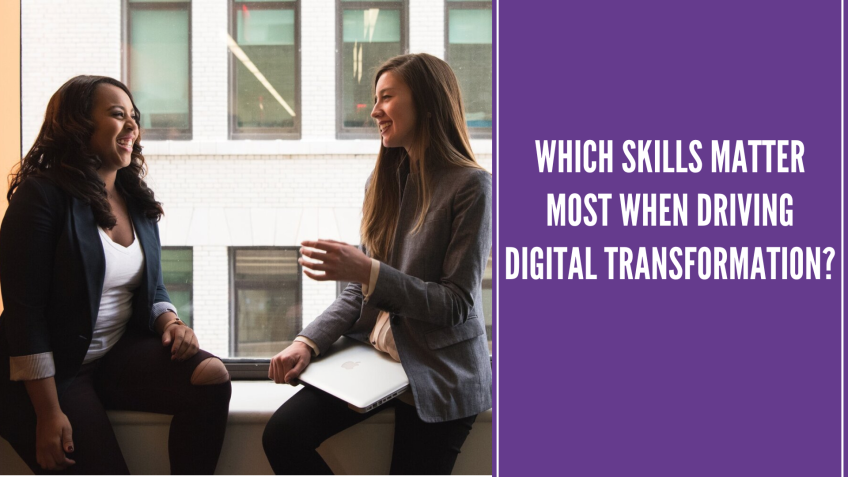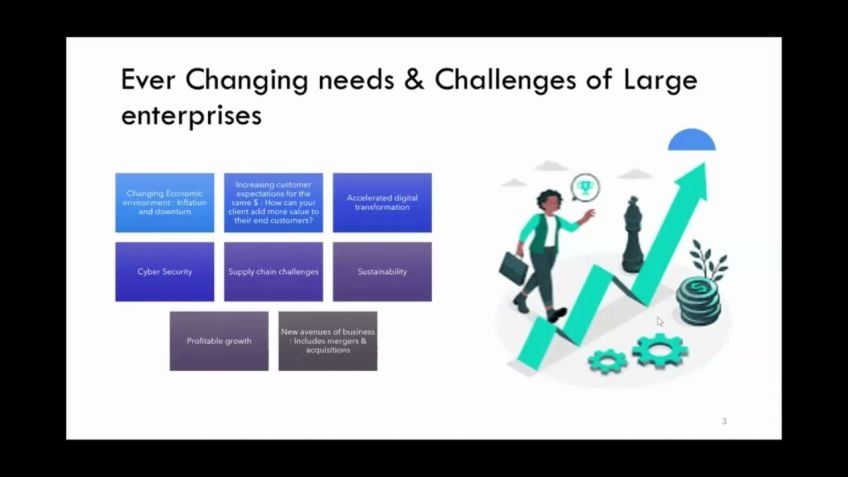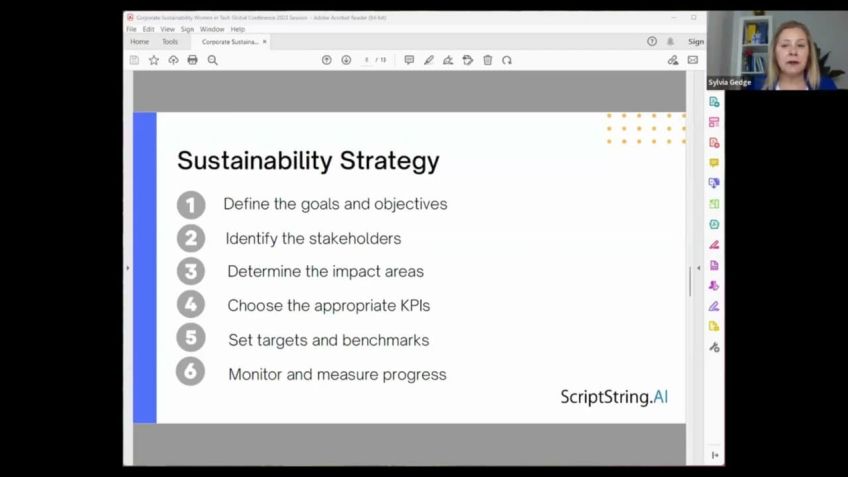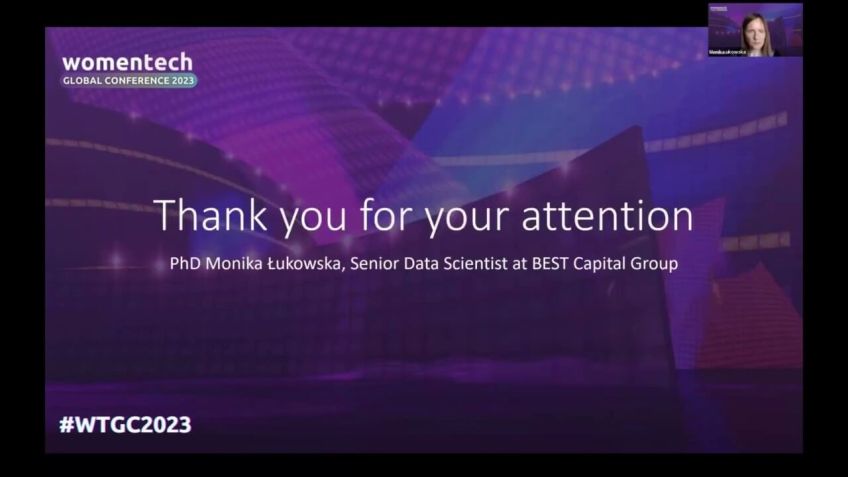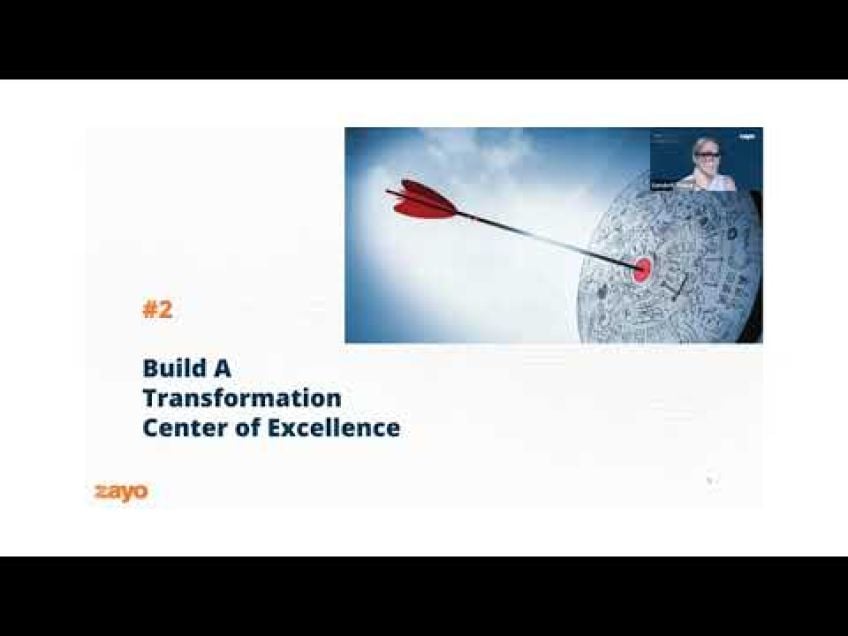Marketing in Tech: Leading Through Digital Transformation by Jean Foster
Leading Through Digital Transformation: A Story from CE S
Welcome to my blog. I'm Jan Foster, the Senior Vice President of Marketing and Communications for the Consumer Technology Association. You might recognize us as the hosts of CE S, a leading tech event held yearly in Las Vegas. I'm here today to relay to you an inspiring tale of how we took our in-person event and transformed it completely into a digital one. This was no small feat, and it's a story full of valuable lessons about the power of digital transformation.
Digital Transformation: It's For Everyone
You might not immediately associate companies such as John Deere, Delta Airlines, General Motors, or Abbott with digital transformation. After all, they're not traditional technology companies. But believe it or not, these companies are all undertaking significant digital transformations, reshaping themselves into tech companies in the process. It's about embracing data analytics, being digitally focused, and harnessing emerging technologies like 5G and AI to drive their business forwards.
COVID-19 further ignited the digital transformation trend, forcing many companies to reposition and reinvent themselves to stay relevant. Our own CE S Innovation Awards saw the highest number of submissions in 2022, pointing to an acceleration in innovation during the pandemic. And it’s here, at the crossroads of tech and innovation, that the story of CE S’s digital transformation comes to life.
Powerful lessons we learnt from our Digital Transformation
Identify the Problem
Asking organizing question like "What problem are we trying to solve?" is a great place to start. For us at CE S, the challenge was bringing together our vast global tech community in the midst of a pandemic. When we deconstructed this question, we discovered that our true purpose lay not in the physical event, but in the community it brought together.
Know Your Audience
Always consider your audience and stakeholders. Understanding their needs can help shape your digital strategy. It's about anticipation: predicting and satisfying their needs even before they realize them themselves.
Reimagine Digitally
The next step is to reimagine your event digitally, not merely recreating what existed physically. In our case, this approach led us to explore inspiring digital experiences from other industries and ultimately led to the evolution of a vibrant, multimedia interactive event in January 2021.
Meet people where they are
Take advantage of the digital medium to reach beyond your traditional audience. Engage and include those who might not have been able to attend your event in person. Ensure your content is accessible, relevant, and appealing to all.
Roadmap your Digital transformation
In forging the path for digital transformation, we suggest you consider the following:
- Data: Leverage as much relevant data as you can.
- Tools: Ensure you have the right ones for your goals.
- Skills: Assess the skills and talents within your organization and see where you might need to upscale or hire.
- Organization: The structure of your business may need to change to facilitate digital transformation.
In conclusion, it's crucial to evaluate, reassess, and be ready to adapt as the digital landscape shifts. Be the face of change within your organization and ensure you're a driving force behind its digital transformation. It might not always be easy, but ultimately, it'll be worth it.
For more insights and stories, feel free to contact me on Twitter at J Foster. And do consider joining us at CE S in Las Vegas in January. We can't wait to share our digital journey with you live. Thank you for reading.
Video Transcription
Thank you for joining me. My name is Jan Foster. I'm the senior Vice President of Marketing and Communications with the commun Consumer Technology Association. Uh We're a trade association that represents the tech community in North America.Uh But most people know us for CE S which is just a little event that we actually run in Las Vegas every January where we bring together the tech community from across the world to come and join us in Las Vegas. Today, I wanna talk to you about leading through digital transformation and I want to do it by telling you a story about how we actually took this huge event that is CE S and transformed it literally to an all digital event and the journey to to, to really show and really share the story that, that we we learned there.
So um let me talk about some of the companies that are going through digital transformation at the moment that may surprise you. Um You know, companies like John Deere, companies like Delta Airlines, companies like General Motors, companies like Abbot, those are companies that you might not think are traditional technology companies. John Deere does farm tractors and trucks. Um But these are all companies that are going through digital transformation and repositioning themselves as digital companies and tech companies. Uh Those are, these are companies that have taken to the CS stage over the last few years and have really focused on reposition themselves from their traditional business.
Be it in agriculture to say John Deere now who focuses on being a data and A I driven organization with data and A I driven combine harvesters that they actually bring to, to ce s. So, so these are some of the examples of the companies um that are going through digital trans formation. Pretty much any company that's out there is starting to reposition themselves as a tech company, General Motors is about moving to all electric vehicles. Um And these companies are transforming to stay relevant. It's about data and analytics, it's about digital everything and it's about technologies, technologies like five G technologies like A I like A and VR. The tools that are going to give people access to the metaverse is about companies now using technologies like web three and Blockchain and crypto to different to engage very differently with their targets audiences and their target customers, you know, so these are all companies that are going through some of these, these translations.
Um COVID accelerated the pace of that digital transition for probably all companies out there. Um You know, we, we actually saw it that c we have um a program called Innovation Awards. So every year people submit their latest innovations and they could be the biggest tech companies.
They could be the coolest hottest start ups, but they actually submit for our Innovation awards. And at CE S 2022 which took place in January of this year, we actually had the highest number number of companies actually submitting awards. So that just showed that that innovation was taking place during COVID. Um In our case for CE S, we had to focus on how we took this organization and this live in person event and really transformed it digitally. Um but not just some of the biggest companies out there, organizations like ours, you know, got a great story of a company that we use when we're in Las Vegas. So the communications team at CE S have to get up at 2 a.m. in the morning to get camera ready to be to have a 7 a.m. camera call for the East Coast breakfast shows in the morning. So to help them get ready, we bring in hair and makeup in a glam squad. And you know, so when we reconvened with this team, when we were in Las Vegas this year, you know, I asked the owner of the company, I said, what have you been doing for the past two years? Have you kept your business running? You know, by definition, hair and makeup is a hands on business. You have to be there with your client. And she told me a great story, which was that she was working with a very prominent client, well known politician that is working on the, on the global stage.
And this individual, she was working with him on hair and makeup for a virtual event. So she got on the phone or on the on the screen with this guy and his wife. And they actually she taught them through her whole tutorial tutorial and they did virtually did the hair and makeup. So even some of the smallest businesses you do not think could be able to digitally transform are really much more forward thinking. Um So it's important that every company is looking at digital transformation. And one of the things that we always say here at CT A and it's actually a phrase coined by our Ceo Gary Shapiro is innovate or die. If companies are not innovating, they are going to be left behind. So what I want to talk through next is about some of the questions that you as a, as a leader in your organization, as a leader in your team. Um really should be asking, you know, as you're looking at digital transformation. And the first question you really got to be asking yourself is what problem are you trying to solve for? You got to really understand what you're trying to address when you want to digitally transform, you know, your entire organization or your little part of that organization.
Um In our case at ce S, our problem was that we bring 100 and 80,000 people from around the world to Las Vegas for six days in January and those are from the biggest corporations in the world to the hottest start ups. It's members of the media, it's investors, it's tech specialists, like many of the people on this call. Um You know, so, so we had to say, OK, how do we do that digitally? And what problem are we trying to solve for? And the question that we were asking ourselves is really who we are and what we do are we really about putting on a great event or are we really about bringing those communities together? And we realized that really what our secret sauce was is well, we're really good at putting on this mega event. It was really about how we bring these organizations in this community, this entire tech community together. And with that starting point that really helped us shape what we created, which was a very large multimedia interactive event actually, which was in January 2021 in the middle of the pandemic. Um And actually, it was, and is still in still is one of the largest events of its type to take place. So it was all about saying, what problem are we trying to solve and who we are?
Um The next question you gotta ask yourself is who your audience is and who are your stakeholders and what do you know about those audiences? And you got to think very, very broadly when you're thinking about your audience and it's everybody from your staff uh to your partners to maybe board members, we've got to really, you got to think very broadly about who are those audiences and stakeholders. What do you know about them and their business? And then how can you apply that to whatever you're trying to solution you're trying to reach for digitally. Um The next step, I would encourage people to think about is how to reimagine what you're doing digitally. It's not about taking what you do in the physical world and just recreating it. And let me give you our example. Um So kind of April May of 2020 when I think we all started to realize that this was probably going to be more than a two month phenomenon with COVID. Um We actually knew at that point that if we wanted to still be in market, we had to make this a digital event, we just couldn't bring people to, to Las Vegas in the middle of a pandemic.
So, um you know, so we, but we had to reimagine it. And when I looked at the technology solutions that were out there, those solutions were focused very much on recreating the physical world online. So they had like a digital trade show floor and an avatar and people were walking around a trade show floor and we said, look, that's just not what this is really about. That is not what's consistent with our brand. But what we did look at as we said, look what's happening outside our industry, what what's happening in the music world at the moment. And if you remember at that time, you know, people were starting to put on concerts online. You know, iheart media was in some great concerts, Billie Eilish was doing a concert from her bedroom, you know, so so the media and the music industry was rethinking how that they show up other elements of the technology industry were also thinking that the sports community, we're saying, OK, how do we keep our audiences engaged?
So we, this is where we again really reimagined and had to think differently about how we engage all of these audiences from around the world and how to make it a really interactive and interesting experience. Um So, so people, you know, if you're thinking about this, people should really be reimagining and not just recreating what you do online. Um As in our case, it was creating a multimedia broadcast experience to while we couldn't replicate the excitement of a live event, we wanted to create that, you know, that moment where people could really engage, attendees could engage with the brands, the media could engage with, with their audiences as well.
So it was a very, very rich environment. Um The next thing to think about is really meeting people where they're at, you know, because this is an opportunity digital medium gives people the opportunity to really engage beyond the traditional audiences. There's only so many people that can come to Las Vegas in any, in any given year. But we know the power of the CE S brand is an example, reaches far beyond the number of people that can come to that to that event. So as we move from CS 2021 which was an old digital event to CS 2022 where we had a physical event in Las Vegas. We also knew that there was a lot of people who wanted to be there that couldn't be. So we really focused on how we engage that audience as well and try and create that live experience to bring them into the show and let them see what was happening on site. So we were really looking to meet people where they were. If you could make it to Las Vegas, that's great if you can engage with us digitally. And you know, it's important to be thinking about those audiences, I say and really meet people where they are. Um and think about the content, you know, how, how you and I all consume content.
Now, it's a very different way of, you know, even maybe then two years ago that we would actually consume content once you've done that you really want to set up your road map for that digital transformation. You got to look at the data, what data do you have that you can leverage? What are the tools do you have the right tools? In our case, we had to have a platform that could bring in people from around the world that had to be secure. It had to be accessible in all these countries by every, you know, pretty much every, every browser out there, every medium of communication. So we had to look at the right tools and you have to ask yourself if you've got those, those tools, you have to look at the skills and the talent within your organization. And it's pretty much a different skill set than, than, you know, in every case, people who are putting on a physical event or maybe people who do stuff in the world in your organization. So look at the skills, look at the talent, what, what do you have to do to develop the talent? What do you have to do to augment the skills might be bringing in partners? It might be again, training and educating your staff to help get there.
Um And then you got to look at the organization. So um there is a, there's, you know, it's very likely that the organization that you have to do your, you know, your, your role business as usual is probably not the right organization structure to make digital transformation.
So you have to be thinking about the organization. So as I would say, look at the data, look at the tools, look at the skills and the talent and then look at the organization and set a plan around that. And this is going to be a multi part part journey, but technology is changing the way all businesses work. So we got to really be thinking about that longer term, that longer term journey. Um So you got the plan, you know, you want to, you got to bring people along with you. So how do you lead through that change? Well, as I mentioned earlier, you got to think about all of your stakeholders. You got to be thinking about um you know, who is part of this. And the first thing I would say to people is start with your own staff. Um The stakeholders in your business are the people who are going to make that transition with you and your own teams, the employees in the business, your close partners, those are the most important stakeholders that you're going to have and you really want to make sure that you engage those people early.
But you also want to be looking at all of the other people who are going to be impacted by any move in any transformation initiative. It could be your executive board who have to get, you know, endorse it and free up the budget to do it. It could be your partners that you need to really execute on this. In our case, it was our exhibitors, you know, again, some of these big global companies, but some of the hottest start ups on the planet, it was the media that we wanted to come in so that they could get that story. So you, it's really important that you think about all of your stakeholders and then you got to bring them on that journey with you. And that is all about community. And when you're making a digital transformation, you, you cannot over communicate, you have to communicate to all of your audiences continually. You have to educate people and make sure that they understand the why of what you're trying to do. You have to show the impact. It's not just about saying this is what we're going to do, talk about activity, you've got to talk about the impact and what this will actually deliver for your audiences. You got to educate them and bring them along on the journey with you.
So as you're starting on a path of digital transformation, make sure you're really focusing on the time you're putting in the time to educate and bring all of those stakeholders along with you on on your journey. Um As I mentioned, show the impact, you know, one of the things I always talk to my team about in the marketing world is marketers are really good at talking about activity but we really should be talking about impact. How, why are we doing this and what is the positive impact to the business in our case? What's the positive impact to our business? What's the positive impact to my clients and the exhibitors that come to see? Yes. Why would they benefit from being on this journey with us? What's the positive impact to the audiences and why should they go on, you know, a digital conference for two or three days when they're very busy and they've probably had zoom fatigue after everybody being at home for a long time, you got to bring them along with you and really got to show the impact to those audiences.
Um And then finally, um you know, as you go through this, as we are, we are at the moment, we're um we're in year three of our journey. Uh year one being 2021 which was all digital. Year two being physical and the digital event. Year three, we're going to continue and grow our physical event, but we're also going to continue and grow our digital event. And we've taken what we've learned over the last few years and we continue to, you know, to evolve and evaluate that and we reassess see what we did, well, see what we did wrong because you're going to make mistakes and you got to learn from those mistakes and move on and keep trying as you move forward.
So it's all about, you know, basically making sure that you're trying, you're evaluating and you're reassessing and moving on. So I know we're going to run out of time here. But I just wanted to, to, you know, just share this little bit of our ce s story. Um because it is to me a great example of how technology is impacting all of our lives. Everybody on at this event today is in the technology, industry, technology is going to change your business. Um And it's really important that everybody embraces it. Um My final words, I think to, to everybody on this call is to, to really look at what the opportunity is. I would encourage everybody to be bold, be the face of change in your organization and that face of change could be for your little part of the organization or it could be your entire organization. But I encourage, you know, as, as women in tech and as leaders in tech, I encourage you to be bold, embrace the technology, look at what that can do for your business and really lead your organization through that. Um And because everybody here is in tech, I want to invite everybody to join us in Las Vegas in January, we're going to be back in January and uh in January 5th to January 8th this year. So if you can join us, please do in Las Vegas.
Thank you all for your time. I hope this was uh a good event for you. If you get any feedback from me, you can, you can just uh contact me directly on Twitter, uh which is just very simply at J Foster. Thank you.

